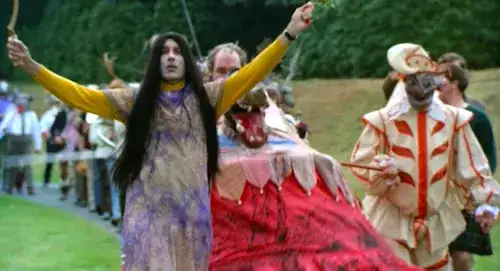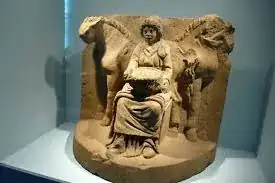In The Wicker Man (1973), the Mayday procession is headed by three masked characters:

Their cast includes many alarming characters:
A man-animal, or hobbyhorse,
who canters at the head of the
procession charging at the girls;
A man-woman, the sinister teaser,
played by the community leader or priest;
And a man-fool, Punch,
most complex of all the symbolic figures -
the privileged simpleton and king for a day.
Six swordsmen follow these figures...
and at the climax of the ceremony
lock their swords together...
In a clear symbol of the Sun.
In pagan times, however, these dances
were not simply picturesque jigs.
They were frenzied rites ending in a sacrifice
by which the dancers hoped desperately
to win over the goddess of the fields.
In good times, they offered produce
to the gods and slaughtered animals,
but in bad years, when the harvest had been poor,
the sacrifice was a human being.
In some cultures, it would be the king himself.
In others, the most beloved virgin.
Very often he or she would be kept hidden
for months preceding the ceremony,
just as the Sun is hidden
from the Earth in winter.
I would like to know if these are real characters from the Celtic mythology or they were just made up for the movie. If yes, do they have formal names and what is the symbolic meaning of those characters beyond what was said in the movie?
